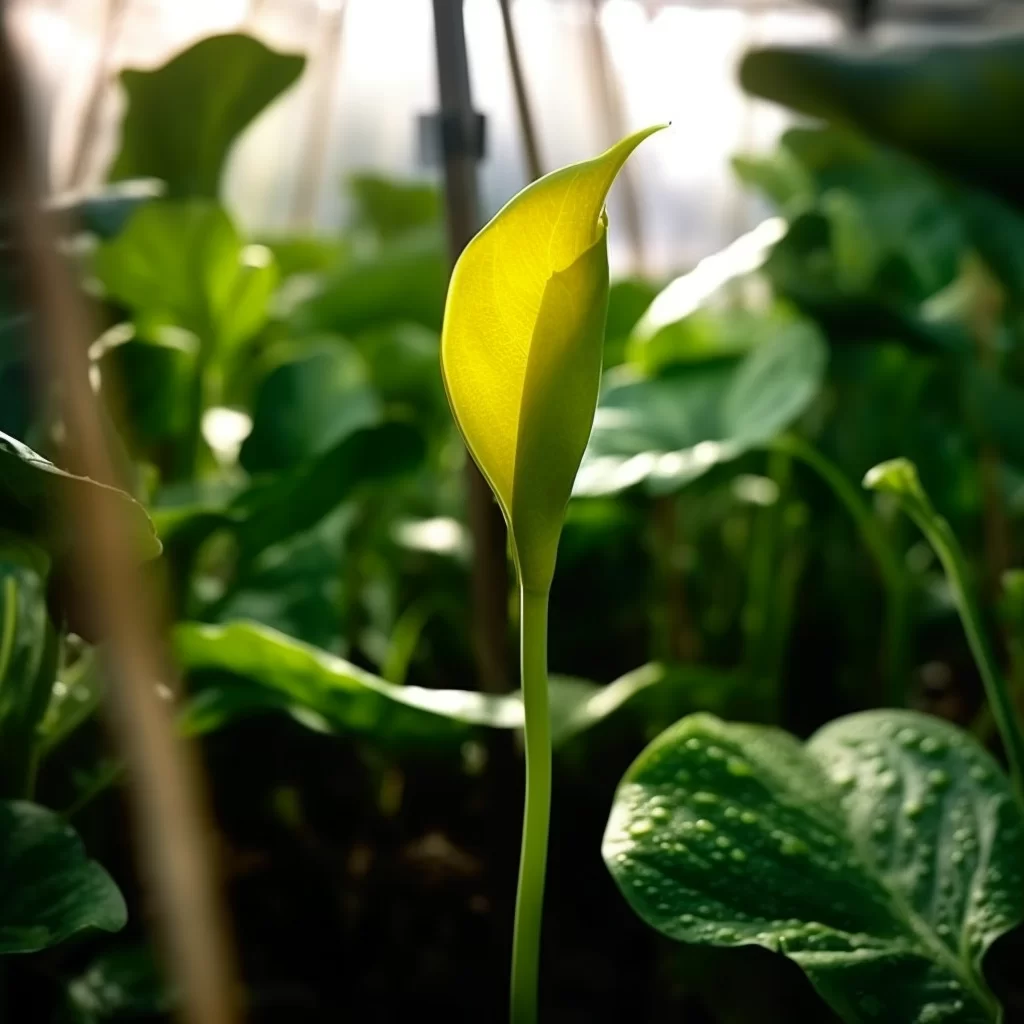Story of Day :
Contents
Calla Plant: A Complete Guide and Care Tips
Gardening has become a popular hobby, and it’s no surprise why.
In addition to being a great way to relax, gardening can also be incredibly rewarding.
One plant that can add beauty to any garden is the calla plant.
These elegant flowers are native to South Africa, but they have made their way into gardens all over the world.
Introduction to Calla Plants
The calla plant is known for its beautiful trumpet-shaped flowers that come in a wide variety of colors including white, pink, yellow, orange, and red.
The scientific name for the calla plant is Zantedeschia aethiopica.
It’s important to note that while these plants are commonly referred to as “calla lilies,” they are not actually part of the lily family.
Care Instructions for Calla Plants

Calla plants are relatively easy to care for and can thrive both indoors or outdoors depending on your climate zone.
Sunlight Requirements:
- Callas prefer partial shade but need some direct sunlight each day.
- If you live in hotter climates where temperatures regularly exceed 85°F (29°C), it’s best if you place them in an area where they get morning sun but afternoon shade.
Watering Needs:
- Adequate watering is critical as callas require moisture-rich soil without becoming waterlogged or oversaturated with water at any time during growth.
- You should aim at keeping their soil moist by watering them once per week during dry seasons; however too much water will lead root rot issues so don’t overwater it
Soil Preferences:
- The ideal soil for calla plants is well-draining and loamy rich in organic matter, with a pH balance of 6.8-7.2.
- You can add compost to the soil to create a better nutrient-rich environment for your calla plant as they require a lot of nutrients to grow healthy.
Fertilizing:
- Add a slow-release fertilizer to the potting mix during planting time or use it once every month throughout growing season.
- It’s important that you don’t over-fertilize them as too much growth can cause weak stems and leaves, also avoid fertilizing when the growing season ends – they need rest at this point.
- Pick a container that is twice the size of the plant’s roots & has adequate drainage holes to avoid waterlogging
- Ensure to put a saucer underneath your pot or planter to catch extra water which helps keep humidity levels consistent.

Pest and Disease Control Measures
Like any other plant species, Callas are susceptible to pests & diseases which can cause severe damage if left unchecked
Pests:
The most common pest that affects Callas are aphids, spider mites & thrips; signs of infestation include yellowing leaves or distorted growth; you should spray insecticidal soap or neem oil on foliage early morning before temperature rise above 80°F (27°C).

Diseases:
Fungi like Rhizoctonia solani which causes root rot diseases will thrive in waterlogged soils while Xanthomonas campestris bacteria results in leaf spots – immediately remove affected parts using clean tools & improve drainage conditions around your plants by adding sand/gravel etc.,
Tips on Growing Calla Plants Indoors

If you live in colder regions where winters last longer than four months, you can still grow calla plants indoors as an alternative.
Container Requirements:
Temperature and Humidity:
The ideal temperature range for indoor growing is between 60°F-75°F (15°C-24°C), Less than 50°F (10°C) could induce dormancy while temperatures exceeding 85°F (29°C) can lead to dryness or wilting.
You’ll also need to keep humidity levels constant by placing a tray of pebbles with water in it near your flowerpot – this will increase moisture content in the air making it less likely for leaves and flowers from drying out too quickly.
In Conclusion
Calla plants are easy-to-grow perennials that add beauty and elegance to any garden.
Whether you decide to grow them indoors or outside, follow these care instructions and tips on pest control measures carefully if you want them thriving healthily all year round.
Fertilize them right, water appropriately, use high-quality soil mixtures with excellent drainage properties & provide enough sunlight; these simple tips will help ensure success when planting callas regardless of where they are grown!